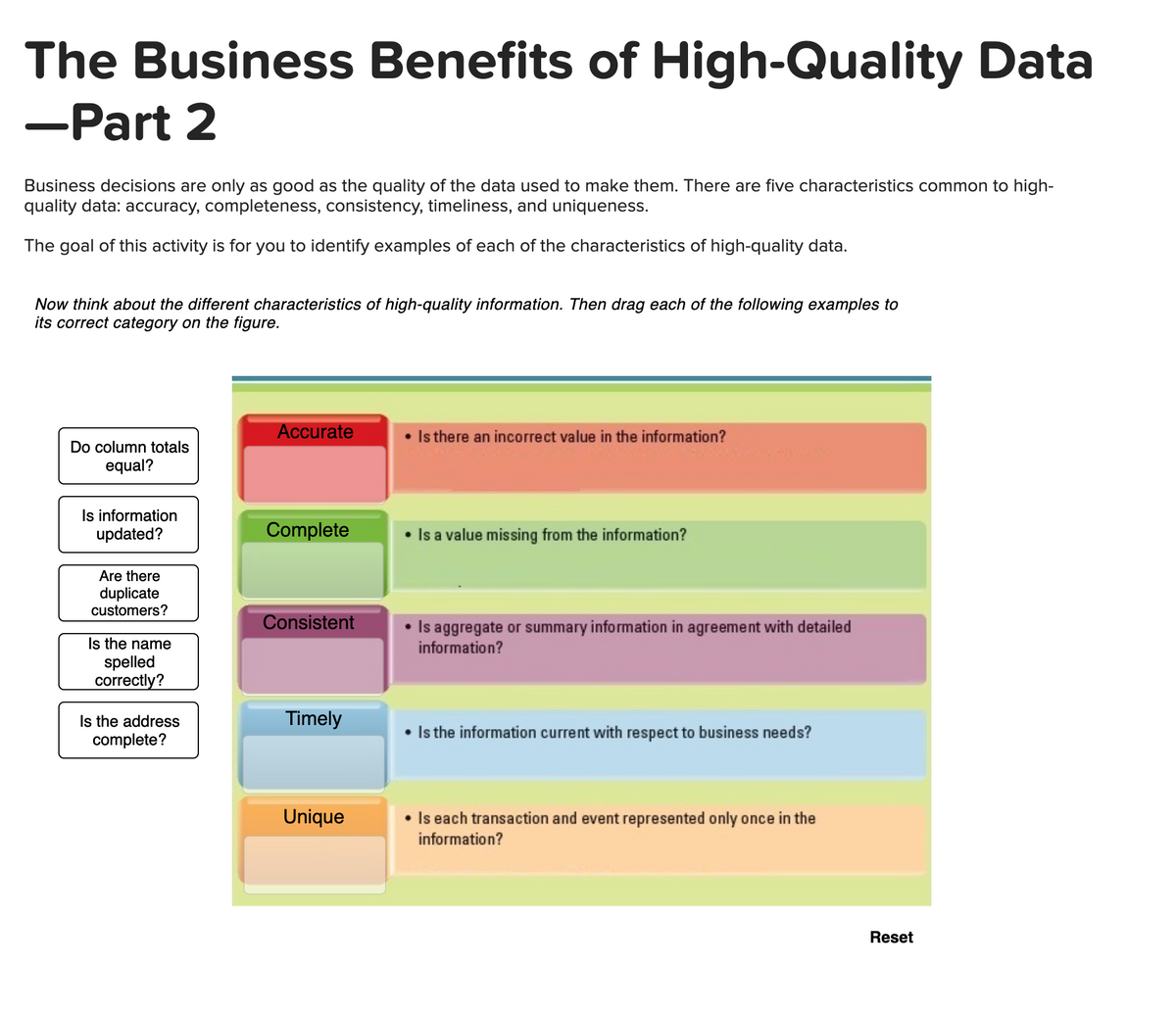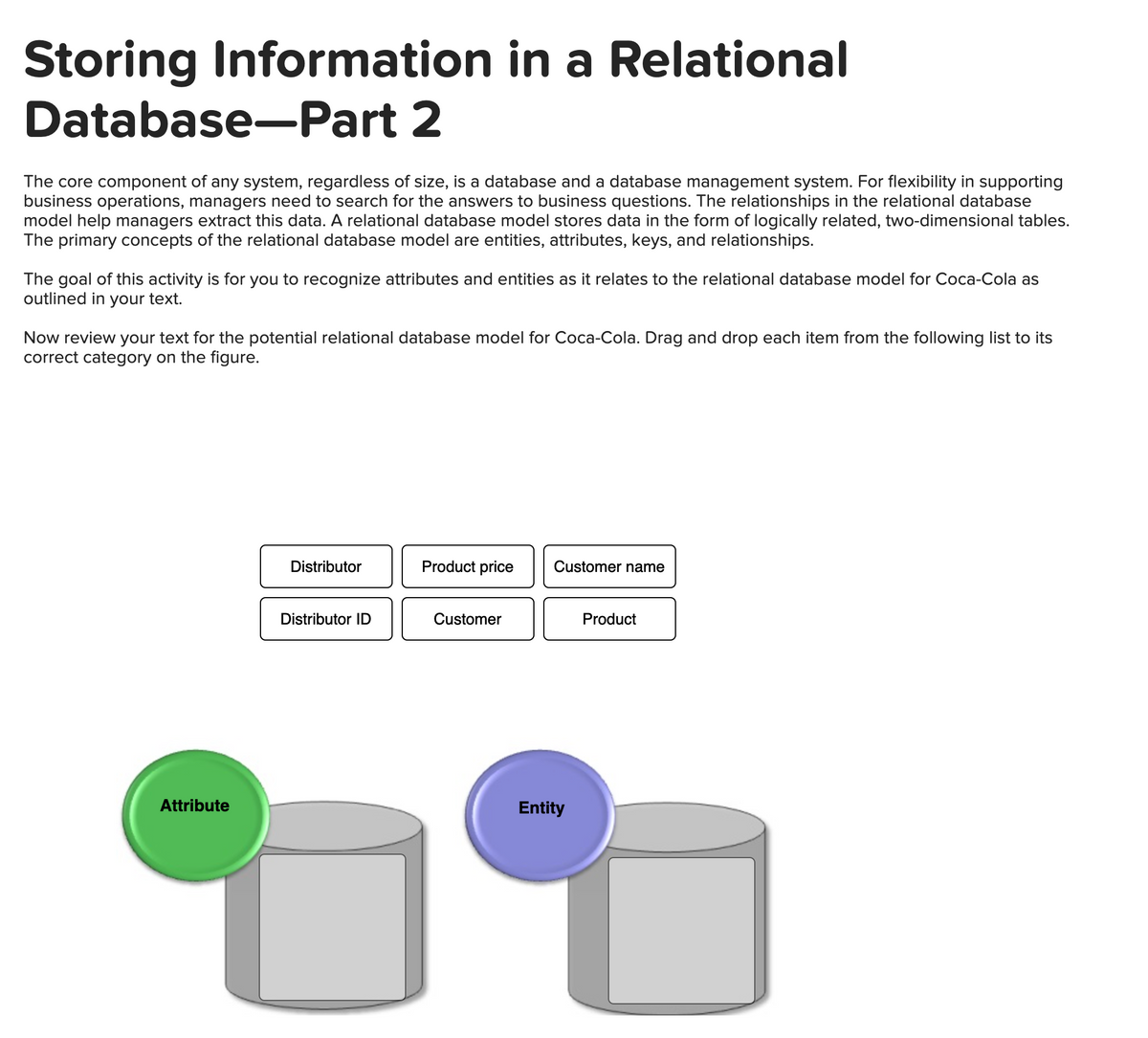Business decisions are only as good as the quality of the data used to make them. There are five characteristics common to hig quality data: accuracy, completeness, consistency, timeliness, and uniqueness. The goal of this activity is for you to identify examples of each of the characteristics of high-quality data. Now think about the different characteristics of high-quality information. Then drag each of the following examples to its correct category on the figure.
Business decisions are only as good as the quality of the data used to make them. There are five characteristics common to hig quality data: accuracy, completeness, consistency, timeliness, and uniqueness. The goal of this activity is for you to identify examples of each of the characteristics of high-quality data. Now think about the different characteristics of high-quality information. Then drag each of the following examples to its correct category on the figure.
Practical Management Science
6th Edition
ISBN:9781337406659
Author:WINSTON, Wayne L.
Publisher:WINSTON, Wayne L.
Chapter9: Decision Making Under Uncertainty
Section9.5: Multistage Decision Problems
Problem 17P
Related questions
Question
I need help with this one please!

Transcribed Image Text:The Business Benefits of High-Quality Data
-Part 2
Business decisions are only as good as the quality of the data used to make them. There are five characteristics common to high-
quality data: accuracy, completeness, consistency, timeliness, and uniqueness.
The goal of this activity is for you to identify examples of each of the characteristics of high-quality data.
Now think about the different characteristics of high-quality information. Then drag each of the following examples to
its correct category on the figure.
Accurate
• Is there an incorrect value in the information?
Do column totals
equal?
Is information
updated?
Complete
Is a value missing from the information?
Are there
duplicate
customers?
Consistent
• Is aggregate or summary information in agreement with detailed
information?
Is the name
spelled
correctly?
Timely
Is the address
complete?
Is the information current with respect to business needs?
Unique
• Is each transaction and event represented only once in the
information?
Reset

Transcribed Image Text:Storing Information in a Relational
Database-Part 2
The core component of any system, regardless of size, is a database and a database management system. For flexibility in supporting
business operations, managers need to search for the answers to business questions. The relationships in the relational database
model help managers extract this data. A relational database model stores data in the form of logically related, two-dimensional tables.
The primary concepts of the relational database model are entities, attributes, keys, and relationships.
The goal of this activity is for you to recognize attributes and entities as it relates to the relational database model for Coca-Cola as
outlined in your text.
Now review your text for the potential relational database model for Coca-Cola. Drag and drop each item from the following list to its
correct category on the figure.
Distributor
Product price
Customer name
Distributor ID
Customer
Product
Attribute
Entity
Expert Solution
This question has been solved!
Explore an expertly crafted, step-by-step solution for a thorough understanding of key concepts.
This is a popular solution!
Trending now
This is a popular solution!
Step by step
Solved in 3 steps with 1 images

Recommended textbooks for you

Practical Management Science
Operations Management
ISBN:
9781337406659
Author:
WINSTON, Wayne L.
Publisher:
Cengage,

Practical Management Science
Operations Management
ISBN:
9781337406659
Author:
WINSTON, Wayne L.
Publisher:
Cengage,